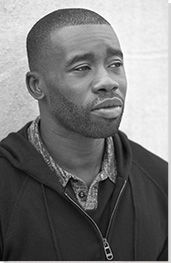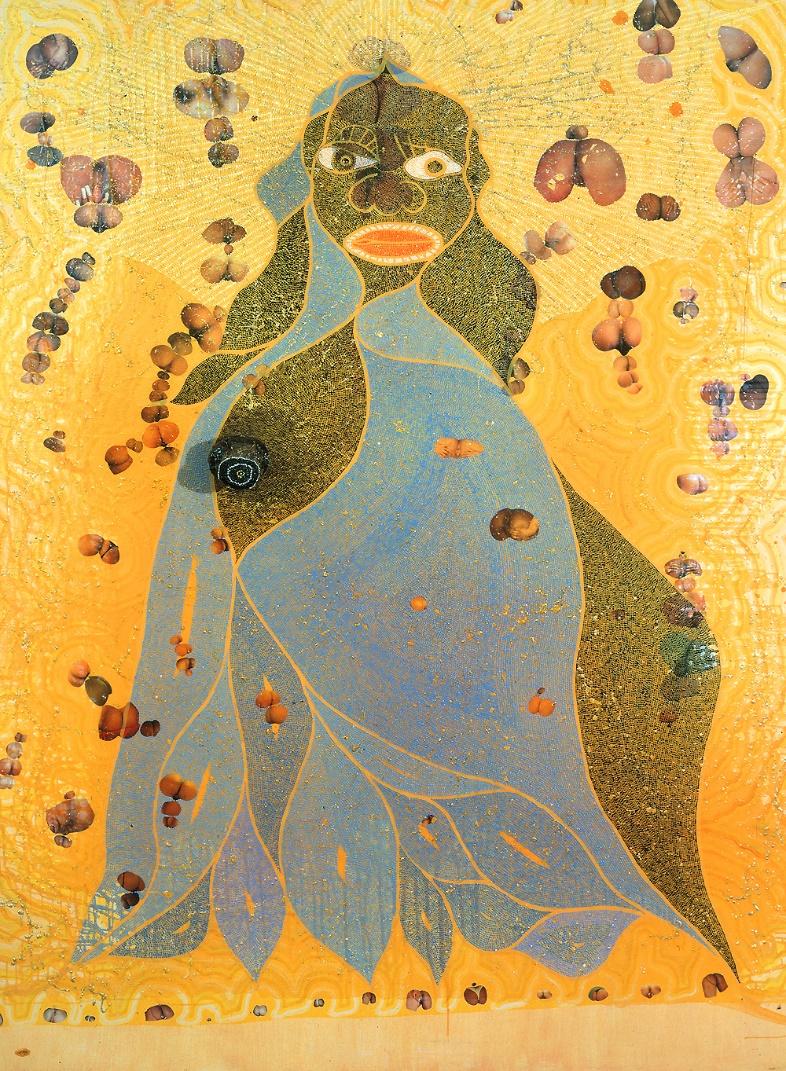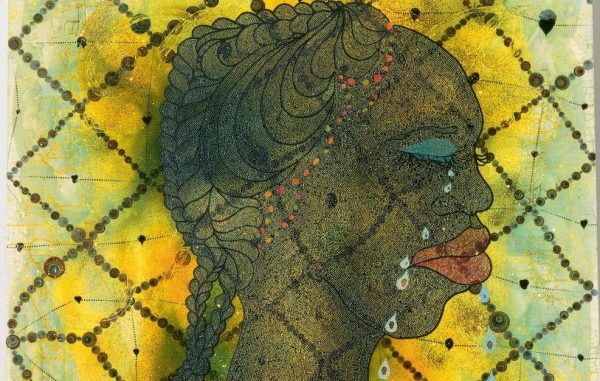
Introduction
Chris Ofili is a Nigerian born in Manchester in 1968 and now living in Trinidad and Tobago, a graduate of the Royal College of Art in London, a member of the Young British Artists group, and the winner of the Turner Prize for 1998. His works are already in the collections of the Tate Gallery, the Victoria and Albert Museum, and MoMA. Decorating the chest of the Madonna in the painting The Blessed Virgin Mary in Appendix A (Ofili, 1996) with elephant droppings and surrounding it with angels, which, upon closer examination, turn out to be photographs of the genitals cut out of magazines, he became a celebrity: even wrote about this representative of contemporary art on the front pages tabloid newspapers.
The portrait itself was painted in the style of many of the artist’s works, and the unexpected and resonant solutions in the form of the image of angels and the right breast of the Madonna caused the most controversy. The artist has always said that sincerity in his work is the most important thing, even despite accusations of obscenity, rudeness, and blasphemy. It should be noted that Ofili considers himself a Catholic, while dung is often perceived as a symbol of Africa. The symbolism of the materials used is much closer to the hidden sacred meanings that allow the artist to express the fundamental and topical idea of the artist louder than the desire to shock the public.
Points
A highly educated artist and devout Catholic, Chris Ofili, an ethnic Nigerian born in Manchester, has written a work that has a specific meaning and in which, as Ofili often does, he uses the metaphysical and everyday aspects of African culture. In exhibitions, Madonna is next to a weeping woman – a portrait of the teacher Doreen Lawrence, who, like Madonna, also lost her son, is presented in Appendix B (Ofili, 1998). In 1993, neo-Nazis stabbed him to death at a bus stop (Ofili, 2021). Doreen Lawrence has dedicated her life to fighting racial hatred and was awarded a peerage last year for her public service. She is now a reasonably well-known politician in England. The pendant on her portrait is also made of manure, and the tears are from photographs of her son. Dung is interpreted here as a symbol of motherhood and human love, comparable in strength to the divine. It is worth considering the various interpretations of manure and the biography of Ofili to confirm the thesis set correctly.
Context
The painting depicts one of the critical symbols of Christianity – the Madonna, and one of the important African symbols – the elephant in its final incarnation – in the form of a litter. Their combination within a single image sets the nerve for the whole work. It is believed that in the African savannah, when the lack of water becomes critical, the life of the natives is saved by a liquid squeezed out of fresh elephant dung by them. Obviously, the symbolic meaning of this fact is directly used by Chris Ofili as a reference to salvation by the water of a righteous life, which mystically pours out from the breast of the Virgin Mary on all suffering Christians (Meyer et al., 2018). In the savannah, it can get quite chilly at night. Residents use fire to keep warm and scare away predators and insects. Dry elephant dung allows kindling it. Thus, by using elephant dung in the image of the Madonna, Chris Ofili also hints at this hypostasis of the sacred image of the Virgin Mary – as light and intercessor, igniting the true faith of a faithful Christian and saving from the temptations and dangers of the surrounding world with this fire of faith.
In the Roman Empire, elephant dung placed in the vagina was believed to prevent pregnancy. It modifies acidity and effectively neutralizes sperm (Adewumi & Kunde, 2022). Here, Chris Ofili has an obvious and persistent appeal to the symbol of purity, sinlessness, and spotlessness of the Virgin Mary, who did not know the male seed. At the same time, the bestiary of the 12th-13th centuries says that elephants accompany the paths behind which the dragon hides, driven by the devil and capturing everyone who succumbs to temptation (Adewumi & Kunde, 2022). So, the elephant dung used by Chris Ofili tells about the temptations of sin and the traps of the devil on the path of the truly righteous man, which is the elephant, and the dangers that lie in wait for sinners excommunicated in their unbelief from the breast of the Virgin Mary.
Supporting Details
In 1999, Mayor Giuliani was offended by all Catholics and demanded to remove the painting from the exhibition, threatening otherwise to stop funding the Brooklyn Museum from the city budget. However, the newspapers were more assertive about the artist’s right to self-expression, and the court ordered the mayor to continue funding the museum. Ofili’s prices skyrocketed, and it was only a matter of time before he made his triumphant return to New York (Meyer et al., 2018). The violent reaction to the presented materials in the painting only drew attention to the artist’s works, where among the ideas of self-expression, Ofili saw more hidden meanings than what lay on the surface.
However, this topic is still controversial. Even though two security guards were assigned to the painting, 72-year-old Dennis Hainer, a Christian and a former English teacher covered the work of Chris Ofili with white paint, motivating his action in the fight against blasphemy (Yang, 2021). Ofili cannot be called an uneducated person or a person far from religion. The artist studied at St. Pius X High School for Boys and then at the Catholic Xaverian College in Manchester. Later, he also studied at Tameside College, where he received basic knowledge in the field of art. From 1988-91 continued his studies at the Chelsea School of Art and from 1991-93 at the Royal Academy of Arts in London. In 1992 he went on a one-year internship in Germany at the Berlin Higher School of Arts. The artist traveled to Zimbabwe on a scholarship from the Academy in the same year, where he studied local cave painting (Chambers, 2019). There, Ofili discovered manure as a regenerative symbol that can evoke many emotions and bring art closer to pristine nature (Chambers, 2019). Therefore, the artist certainly did not seek to harm religious teachings or blaspheme – he only chose an unusual way to do this.
Conclusion
Chris Ofili stirred the public with his painting The Blessed Virgin Mary, using experimental materials to realize his idea. At the first examination, the audience and dignitaries saw in the picture an evil intent that lay on the surface and obscured the meanings of the difference in cultures. Ofili is educated and deeply religious, and his message was like an experiment to introduce an element of primordials into known motifs for which elephant dung was chosen. Its applied use since ancient times has had many possible applications, which, in the context of the history of the Virgin Mary, are revealed in a completely new way. Finally, the metaphysical aspects of African culture are found more than once in the works of Ofili, which only confirms the thesis.
References
Adewumi, C. K., & Kunde, T. M. (2020). The Role and Importance of Context in Art. The University of Jos Fine and Applied Arts Journal, 2(2), 228-241. Web.
Chambers, E. (2019). Black artists in British art: a history since the 1950s. Bloomsbury Publishing.
Meyer, B., Kruse, C., & Korte, A. M. (Eds.). (2018). Taking offense: religion, art, and visual culture in plural configurations. Wilhelm Fink.
Ofili, C. (1996). The Holy Virgin Mary. Museum of Modern Art, New York, USA.
Ofili, C. (1998). No Woman, No Cry. Tate Modern, Liverpool, UK.
Yang, C. (2021). On the conflict construction in Chris Ofili’s paintings–Taking the Holy Virgin Mary as an example. International Journal of Social Sciences in Universities, 141.
Appendix A

Appendix B
